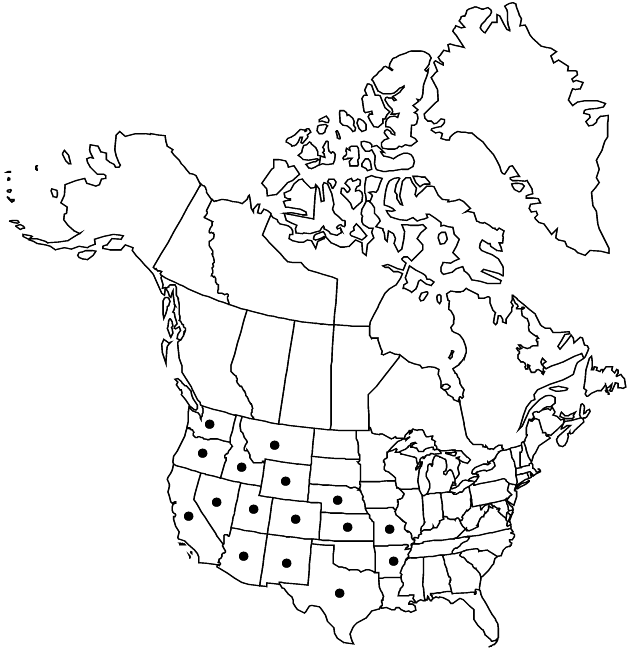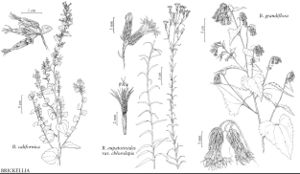Brickellia grandiflora
Trans. Amer. Philos. Soc., n. s. 7: 287. 1840.
Perennials, 30–95 cm (taproots thickened). Stems branched, puberulent. Leaves opposite or alternate; petioles 10–70 mm; blades 3-nerved from bases, deltate-ovate, lance-ovate, or subcordate, 15–120 × 20–70 mm, bases acute, truncate, or subcordate, margins crenate, dentate, or serrate, apices attenuate, faces puberulent and gland-dotted. Heads (nodding in flower and fruit) in loose, corymbiform or paniculiform arrays. Peduncles 4–30 mm, pubescent. Involucres cylindric or obconic, 7–12 mm. Phyllaries 30–40 in 5–7 series, greenish, 4–5-striate, unequal, margins scarious; outer lance-ovate to lanceolate (pubescent, margins ciliate, apices long-acuminate), inner lanceolate to lance-linear (glabrous, apices acute to acuminate). Florets mostly 20–40(–70); corollas pale yellow-green, 6.5–7.5 mm. Cypselae 4–5 mm, hispidulous to hirtellous; pappi of 20–30 white, barbellate bristles. 2n = 18.
Phenology: Flowering Jul–Oct.
Habitat: Rocky hillsides, shaded forests, dry slopes, canyons
Elevation: 1200–3000 m
Distribution

Ariz., Ark., Calif., Colo., Idaho, Kans., Mo., Mont., Nebr., Nev., N.Mex., Oreg., Tex., Utah, Wash., Wyo.
Discussion
Selected References
None.
